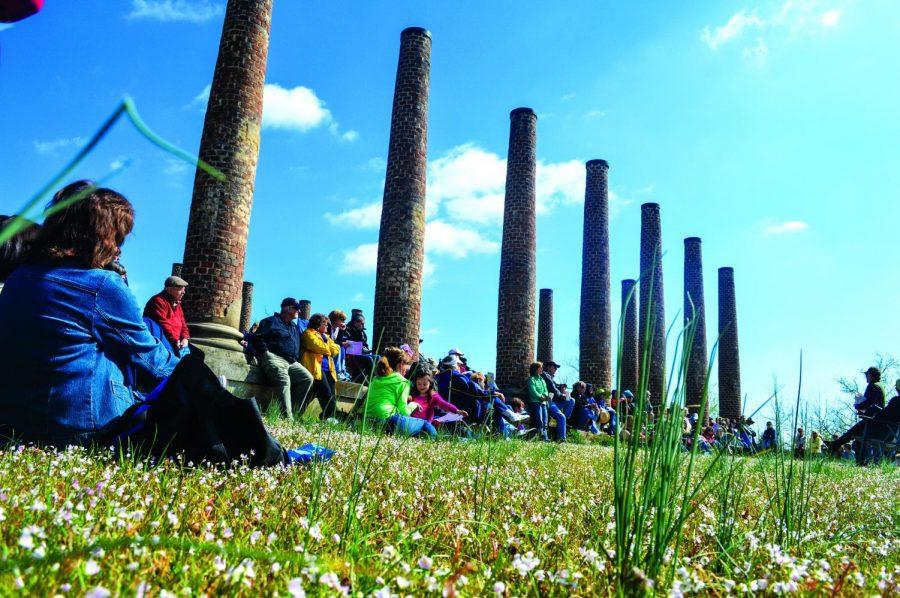Forks of Cypress Plantation sparks community interest
April 10, 2014
Forks of Cypress Plantation is not merely ruins of an old house with a cemetery, rather a testament to the tie between local and national history. A record breaking 200-plus people from across the North Alabama area gathered at the site of Forks of Cypress Plantation for a walking tour provided by Florence-Lauderdale Tourism Saturday, April 5.
“When I taught history at Coffee and I teach the local history class at UNA, I always try to tie in, or I did try to tie in, what was happening in the nation’s history to what was happening here,” said Harry Wallace, a tour guide with Florence-Lauderdale Tourism. “There is a local connection to almost every local place to our national heritage. This one is really steep. We have a lot of history here that people don’t realize.”
James Jackson, an immigrant from Ireland who loved horses, built Forks of Cypress Plantation in the early 1820s. With a large wraparound porch and 24 pillars surrounding the home, it is believed to be one of the first homes in America and Alabama to use peristyle architecture.
Jackson used the home to raise thoroughbred horses and included a racetrack and stables nearby.
If it had not been for the outbreak of the Civil War, Florence could have been the equivalent of Kentucky for horse racing and breeding, Wallace said.
Wallace grew up on the Forks of Cypress Plantation. He remembers hiding in the root cellar as a child and running to the house when lightning struck it on June 6, 1966, burning the entire house to the ground. All that remains are 23 of the 24 stone pillars.
Wallace, a retired history teacher from Colbert County High School, teaches a continuing education course at UNA called “History of the Shoals.”
“I think personally you either like history when you’re growing up or you like history when you get older,” Wallace said. “And for me, I was born into it. I’ve liked this site and the history of this site since I was a child. I used to encourage my students to read as much as they could and visit as much as they could so they would understand a whole lot more about not only where they came from but how important it is nationally.”
UNA students are probably the one group that is missing from most of the tours, said Assistant Director of Florence-Lauderdale Tourism Allison Stanfield.
“We always end up with a lot young children whose families, whose parents, whose grandparents want them to learn the history, but probably the college age student is the one we’re missing,” she said. “So many college students, and I know when I was in college I felt the same way, don’t really have that connection to your community. You don’t really know what it’s about it and learning about the history, it gives you some fascinating things about your community.”
Sophomore geography and history student Madison Green toured Forks of Cypress as part of a cartography project. She is mapping out historical places around the Florence community that potential visitors may want to visit.
A native of Florence, Green chose the topic hoping to benefit the Florence community and educate fellow classmates, she said.
“I think they should care about Florence,” she said. “It is a very interesting place and it’s some place where most people have grown up in their whole lives. When they leave Florence, they’ll have to go and talk about it or explain it, and they’ll need to explain how interesting all of our history is.”












